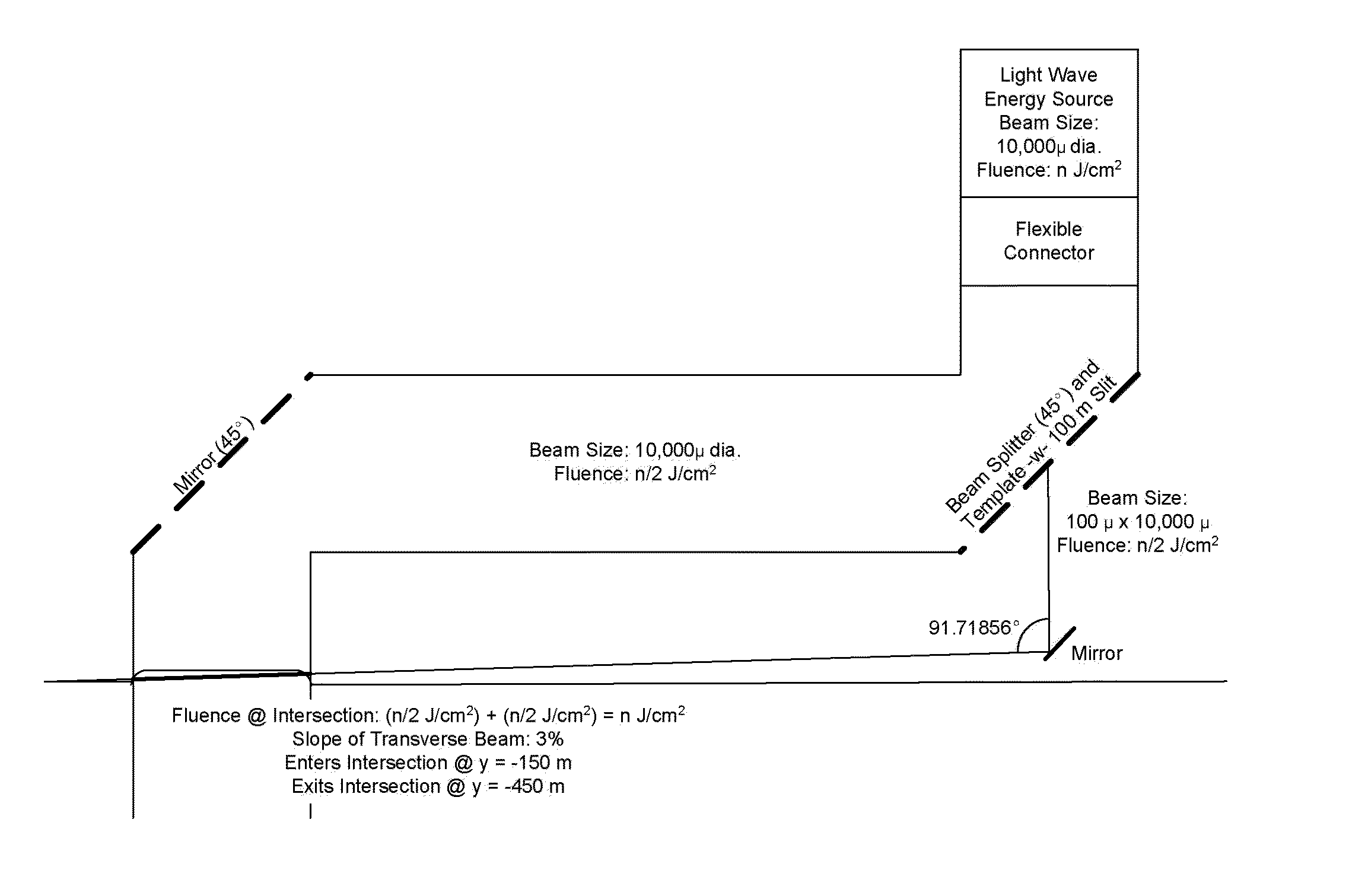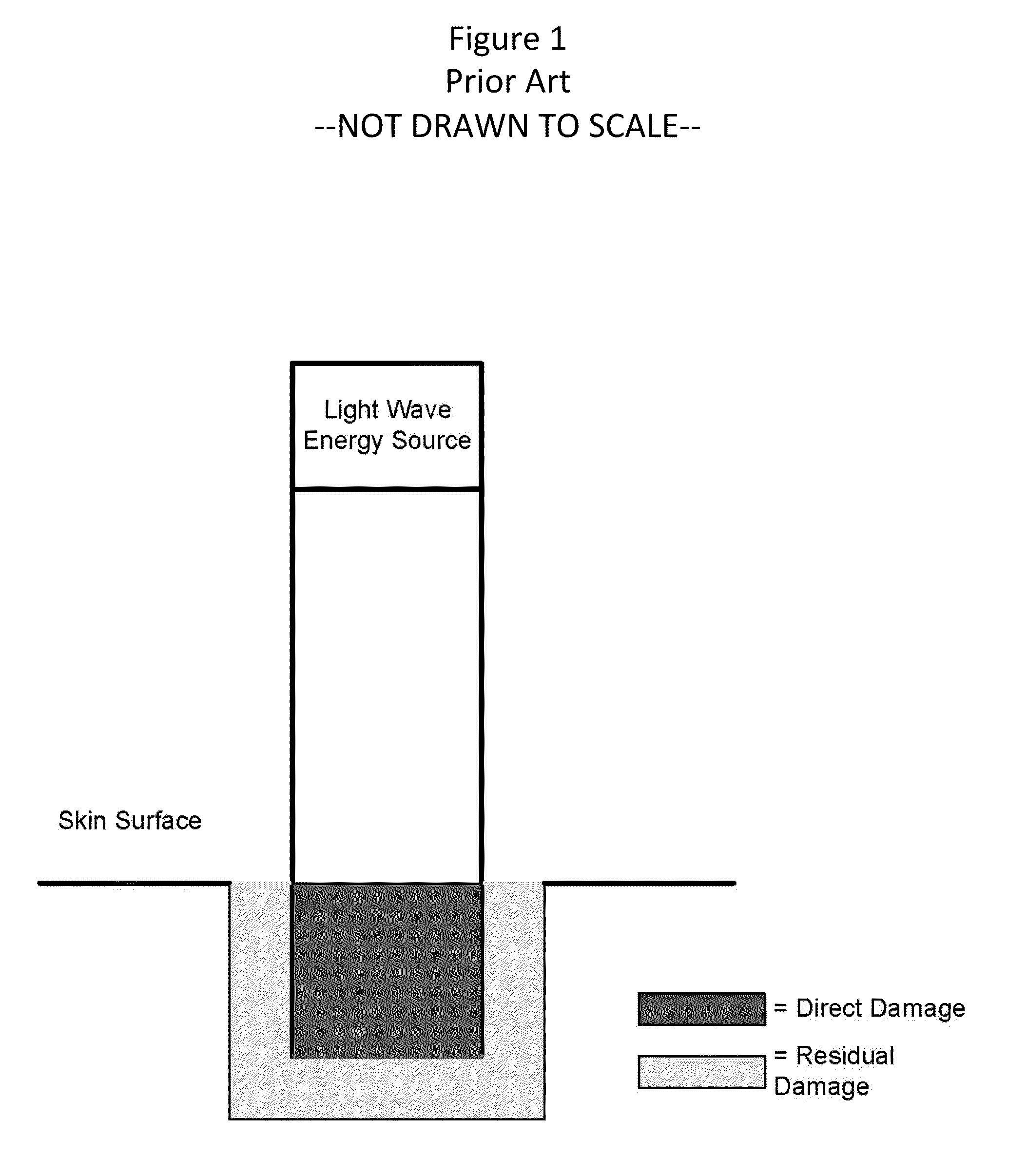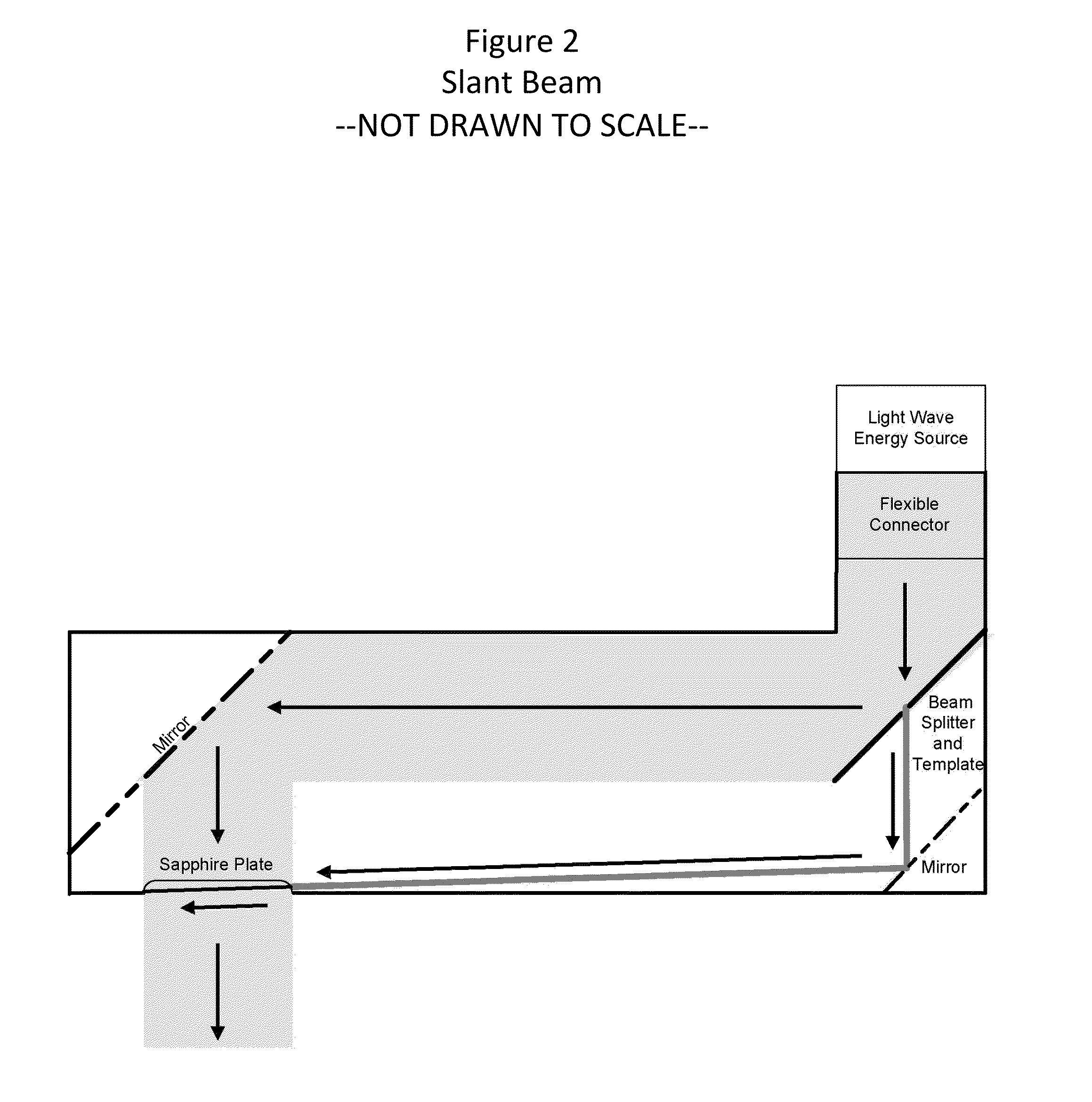More dermal retraction with intersecting electromagnetic radiation pathways
a technology of electromagnetic radiation and electromagnetic radiation, which is applied in the field of more dermal retraction with intersecting electromagnetic radiation pathways, can solve the problems of insufficient energy produced by each split beam alone, insufficient to create either the desired level of disruption to the dermis or an excessive degree of damage to the epidermis, and the desired level of dermal tissue disruption, so as to achieve significant retraction of the dermal tissue, avoid excessive damage to these adjacent structures, and the effect of dermal layer disruption
- Summary
- Abstract
- Description
- Claims
- Application Information
AI Technical Summary
Benefits of technology
Problems solved by technology
Method used
Image
Examples
Embodiment Construction
[0019]In a preferred embodiment of the present invention, one laser or other EMR device is used. The output beam of this device is split into two or more output beams of lesser fluence. By using mirrors or other reflective devices, these beams are then redirected to a point of intersection located at the desired dermal depth. The energy produced by each split beam alone is insufficient to create either the desired level of disruption to the dermis or an excessive degree of damage to the epidermis, the subcutaneous fatty tissue, or the blood vessels of the skin At the point of intersection of these beams, however, the cumulative energy that is generated is sufficient to cause the desired level of dermal tissue disruption and produce dermal retraction at the desired dermal depth.
[0020]In another preferred embodiment of the present invention, one or more laser or other EMR devices are used that produce more than one output beams. These beams are directed to a point of intersection loca...
PUM
 Login to View More
Login to View More Abstract
Description
Claims
Application Information
 Login to View More
Login to View More - R&D
- Intellectual Property
- Life Sciences
- Materials
- Tech Scout
- Unparalleled Data Quality
- Higher Quality Content
- 60% Fewer Hallucinations
Browse by: Latest US Patents, China's latest patents, Technical Efficacy Thesaurus, Application Domain, Technology Topic, Popular Technical Reports.
© 2025 PatSnap. All rights reserved.Legal|Privacy policy|Modern Slavery Act Transparency Statement|Sitemap|About US| Contact US: help@patsnap.com



